Disclaimer: The review copy of the lens that I used for this review was provided by Tamron Canada (thanks!) but I am receiving no form of compensation for this review and they stressed that they were interested only in my objective impressions of the lens.
Introductory Thoughts:
I have been interested in trying this lens ever since it was announced. As many of you know, I am a big fan of Tamron’s recent 24-70mm f/2.8 VC lens, and the thought of a matching lens in this incredibly useful focal length was exciting. I owned Tamron’s previous 70-200mm f/2.8 lens for a while, and, while I loved the focal length and image quality of the lens, the auto focus was simply not fast enough to use in event work. I eventually let it go and recently have covered that focal length with primes when in lower light and Canon’s excellent 70-300L when outdoors.
This new lens is reputed to not only up the ante optically over the old lens but also improve the autofocus issues with Tamron’s new USD (Ultrasonic Silent Drive) motor and add the very important element of image stabilization (Vibration Compensation or VC in Tamron speak). The resulting lens is the Tamron 70-200mm f/2.8 Di VC USD lens. Tamron also claims that this lens is the smallest and lightest in its class while having a pro level build quality (including weather sealing). This claim is a wee bit disingenuous, as while it is lighter than, say, the Canon 70-200 f/2.8L II lens, it is a total of .7 oz (20 grams) lighter and is actually over 5 oz (150 grams) more than the lens that it replaces. It should also be noted that it is slightly heavier than Sigma’s recent stabilized offering. It is also the shortest lens in the class, but again that is only by .4 of an inch (roughly 11mm). I bring this up only to say that while “smallest” and “lightest” in class sounds great for marketing, these minute differences are probably not the primary reasons to buy the lens as they will be next to negligible in the field. Fortunately this lens has much more up its sleeve than this marketing hyperbole.
First Impressions
I was thrilled to have an opportunity to test this lens. That being said, as always I will strive to give you my unvarnished opinion of the gear, both good and bad. I don’t own stock in Tamron (although maybe I should!)
The lens feels great in the hand. The build quality is very close to the excellent levels of the Canon MKII, which is to say excellent! Solid and dense, but not as heavy as I anticipated. Over a week and a half of heavy use (at least a thousand shots) I never felt like I had an issue handholding the lens. I am primarily a handheld shooter, so I quickly remove the tripod collar from any lens unless I am actually using a tripod. The reduced weight is very welcome. If you are shooting on a tripod, though, any lens that comes with a collar does so for a reason. You will save yourself a lot of grief by using it! At one point during the wedding shoot I had the lens mounted on the Canon EOS 6D full frame body with a Canon 580EXII mounted on top…and that is a heavy combination. I am accustomed to using pro lenses, however, and I did not find the weight overly cumbersome. I use Canon 6D bodies primarily, and I did find the lens a little front heavy on this body. The balance point with the 24-70 VC is perfect on the 6D, but I feel like the balance with the 70-200 would be better either with a battery grip or a larger body. I certainly adjusted to the balance over the period of the trial, but I do feel those with either a grip or a 5D MKIII or larger body will probably find the balance more pleasing.
There seems to be a trend recently to reverse the order of the zoom and focus rings, and this lens is no exception. This is not my personal order of preference, but again it is something that you quickly adjust to. This lens is internally zooming (as are all lenses in this class), so I was surprised by the amount of resistance in the focus ring. It was a bit stiffer than what I was accustomed to with this style of lens. Over that short period, I can’t say whether this is by design, copy specific, or whether it might loosen up some over time. Others have expressed a similar sentiment regarding the Canon equivalent, too. It isn’t so smooth as, say, the Canon 70-200mm f/4L IS.
The build quality feels very good. There is a rubber gasket at the lens mount that is the primary external evidence of the weather sealing on the lens. The materials feel good to my touch and I personally prefer the more traditional shape of the new lens to the older one that seemed to “grow” the further you got from the camera body.
More important, however, is the addition of two very important features: VC (Vibration Compensation) and USD (Ultrasonic Silent Drive). Despite a fast (for a zoom) maximum aperture of f/2.8 across the focal length, image stabilization of some kind is incredibly helpful for several reasons. First, of course, is the ability to handhold lower shutter speeds. If you have a stationary subject, this enables you to shoot at very low shutter speeds (I have a high keeper rate at 1/15th second even at 200mm). Tamron claims a 4 stop advantage, and this proves about accurate in the field. Tamron’s VC system is typically well behaved and is very quiet in operation (unlike, say, the Canon 70-200 f/4L IS, which sounds like the barrel is full of angry bees.) Under normal operation the Tamron VC system is both more effective and quieter than rival systems in my experience (this is the fourth lens that I have used sporting Tamron’s VC). Unfortunately I did experience some field issues with the VC system on occasion where the VC would make the image rock slightly on the Y axis. This problem was intermittent and others could not replicate this issue, nor have I heard complaints from others reporting a similar issue, so it was most likely the result of a particularly hard knock in transit to me. That brings me to another point: one sure advantage of buying a Tamron lens is the six year warranty (Canon’s warranty is 1 year). I have had excellent experiences in the past dealing with Tamron’s warranty service and feel that any kind of unique issue with a lens is likely to manifest during that period.
My primary use of a lens like this is for event/wedding work along with portraiture. In either case I am not going to be using very low shutter speeds because my subjects are not staying still. I typically use a minimum of 1/160th of a second for event work and prefer 1/200th or 1/250th. Having image stabilization is still nice even at these shutter speeds for two reasons: 1) It provides a still image in the viewfinder which allows for more accurate composition and more finite focus and 2) Even at faster shutter speeds my keeper rate is still slightly higher because I am eliminating any camera shake from the equation. Having used both of Tamron’s 70-200mm f/2.8 lenses, I can safely say that the new lens is by far my preferred tool for my kind of work.
The second new feature is equally if not more important: the Ultrasonic Silent Drive (USD). Tamron’s previous offering had very fine image quality but was at times painfully slow to focus. It was usable if making only fine adjustments, but major adjustments meant missed shots. It was unusable for critical event work. This new lens does a great job of solving that problem. The biggest compliment that I can pay to it is that I quickly stopped noticing the AF; I simply focused. It is not the absolute fastest lens that I have ever used, but it is very fast. It would be even faster if not for an occasional split second fine tuning before final lock. I would have no hesitation using this lens for critical event work (I did, in fact). Also very important is the ability to grasp the manual focal ring at any point to make fine adjustment (full time manual override). The previous lens required one to engage a clutch mechanism to switch into manual focus.

AFMA Notes
I should first note that I found the lens’ focus quite accurate without any kind of fine tuning. This bodes well for those with a lens body that lacks the ability to do AFMA (auto focus microadjustment). Since I have the capability of doing AFMA, however, I always do it on all of my lenses because it enables me to get an even higher rate of super sharp shots (and yes, I am a confessed pixel peeper)! The new Canon bodies allow for adjusting zoom lenses on both the wide and telephoto ends. I have found that my lenses can become more apparently sharper because of increased auto focus accuracy.
I bring this up to tell a quick good/bad story. Please don’t do what I did and do a quick AFMA before a critical event without some time to field test AF. I use Reikan FoCal for my AFMA work, and through practice have learned to get highly accurate results with the software. In this case, however, I had limited time and didn’t quite accomplish what I wanted to. The problem with making microadjustments is that if you DON’T get it right you actually DIMINISH AF accuracy. There were things that I did right (lighting was good, I had an EV value of 11.2, ran the test a couple of times). I returned values of -1 on the Wide end and a 3 and a 4 on the telephoto end. I stuck with 3. What I did wrong on a minor level was that I didn’t have time to make enough room to shoot at a long enough distance on the telephoto end but the biggest mistake was that I didn’t leave time for some field testing. Don’t do this! For some reason I did not end up with the right values, and as a result did not maximize the potential of the lens for a critical event. There were some images that I was unhappy with because of diminished AF accuracy that had nothing to do with the sharpness of the lens.
After said event I took more time and did a fully accurate AFMA (I typically run the program at least three times at each extreme to get a more standardized result). My final results (that proved accurate) the second time were -4 on the Wide end and -3 on the Telephoto. You will note that both of those values are quite different, particularly on the telephoto end. I shot for a week after this point and was very impressed with the lens sharpness and the AF accuracy on the lens. The moral of the story? If you are going to do AFMA, do it right!
On a final note, I was very happy to see that the exposure value/shutter speed was constant from wide to telephoto; this is a true f/2.8 lens. In fact, chart testing while comparing the “big dogs” from Canon, Nikon, and Tamron reveals that the Tamron actually has the best light transmission of the three and is the closest to being a genuine constant aperture f/2.8 lens (T-stops: Canon = T/3.4; Nikon = T/3.3; Tamron = T/3.2). Please note that it is incredibly rare (as in almost never) for a lens’ measured T-stop to equal its maximum F/stop.
But most people don’t buy a lens for its technical merits alone; we buy lenses to take pictures. And this is the arena that the Tamron really shines in!
Beautiful Color; Beautiful Bokeh
There is a reason that people love these types of lenses. Despite their size and bulk, the ability to create beautiful images in almost any type of setting makes it all worthwhile. I shoot a lot of primes in this focal length (I have six options) and produce beautiful images through this approach. That being said, nothing tops the versatility of a zoom. Having the flexibility to frame images in a variety of ways on the fly gives an event or wedding photographer the ability to react quickly to changing situations. Changing lenses in the field (particularly during an event) means the likelihood of missing a key moment rises. There is also always the risk of introducing dust or moisture into the camera body, but I have learned how to effectively deal with this over time. The primary reason that people prefer primes is the additional sharpness and frequently better bokeh (out of focus rendering). The Tamron pretty much makes this point moot, as it is excellently sharp and has truly beautiful bokeh rendering. Because of the curved aperture blades this remains true as the lens is stopped down. But the truth of the matter is that I would use this lens wide open probably at least 90% of the time as its sharpness at all focal lengths is impressive.
I have read others comment on a fall off of sharpness at the long end of the range, but once I had the lens “dialed in”, I just didn’t see it for myself. I have a hard time believing that anyone would be disappointed with the results they get from this lens from an image quality perspective. Let me put it this way: Getty has already requested multiple images taken during my brief stint with the lens, and in the image below they actually sent me a note to make sure the text was no longer legible for licensing purposes. That is one sharp lens!
Color rendition is gorgeous with the lens. One thing I noticed over the trial is that while Tamron lenses typically tend towards warmer color rendering, this is not the case with this particular lens. It is more neutral, even slightly tending towards cooler rendering. Colors are very vivid and rich, though, while skin tones are very naturally produced. I have rarely seen better color rendering.
And the bokeh! This is one area where Tamron seems to have outdone the mighty Canon equivalent. The one knock against the Canon is that in certain situations the bokeh can be slightly harsh. That is certainly not the case with the Tamron. It produces stunning bokeh. Very soft and creamy. My Canon 135L f/2 lens outdoes it, but it also outperforms any other lens that I have seen in that area. Gorgeous! The transition from focus to defocus is very smooth. The image quality in every facet produced by the lens is simply excellent.
This series shows the bokeh produced by the lens in stops including f/2.8, f/4, f/5.6, and f/11, all at 200mm. (All image straight from camera)
Here are a few more samples that show the bokeh quality, which is very gentle and artistic. (All of these images are straight out of camera without adjustment)
Distortion, Vignetting, and Chromatic Aberrations
As of the moment there is no profile in Adobe Lightroom for this lens, but I didn’t find that I really needed it. There is a tiny bit of distortion at the extremes that show up on test charts, but field (read: real life) distortion is so negligible as to be not worth mentioning. I didn’t miss not having a profile, although I’m sure that one will be added before long.
There is a very mild bit of vignetting in field use, but for the type of work that I typically use such a lens for I actually like a bit of vignetting. If you don’t like it, it is easily removed in post.
I did not notice any type of chromatic aberrations during my time with the lens. This seems to be a real area of strength for the lens, particularly when compared with some of my prime lenses.
There is no apparent CA in this shot that is a prime opportunity for it:
In conclusion, optically strengths are many and deficiencies are few. This lens produces great looking images, period.
Macro…Not so Much!
One area where this lens has taken a big step back from its predecessor is in its “macro” or close focus ability. This reduced ability comes from two sources. The first is an obvious one; the minimum focus distance has grown by 14 inches (45 cm). What was a class leading spec in both minimum focus distance and maximum magnication (.32x) has been reduced to a lower than average level. The minimum focus is now 4 inches longer than the Canon equivalent, but worse, the maximum magnification has plummeted to only .13x. The Canon has a maximum magnification of .21x. Why the big difference between these two figures? Therein lies the other half of the equation: the Tamron heavily “focus breathes”. Focus breathing, put simply, means that the effective focal length reduces near minimum focus. Look at these images: the tripod was in the same position, and I used the comparison of the Canon 135L + 1.4x teleconverter to create a 189mm equivalent along with my Canon 70-300L @ 200mm for comparison. It should be noted that my Canon 70-300L also focus breathes significantly, but that is reduced somewhat by the fact that I am not zoomed in completely for this comparison. You will see how the Tamron’s magnification at this distance is obviously much lower, particularly when compared with the 189mm prime setup. The byproduct is also a more diffused background for the prime setup although it too is a maximum aperture of f/2.8.
In this second set of shots you see how that the Tamron returns to its proper focal length when closer to infinity focus. It is much closer to a true 200mm here, framing much tighter than the 189mm although not quite as tightly as the Canon 70-300L @ 200mm.
Just as a point of reference, the high end Nikkor 70-200mm VRII is considered to be more like a 135mm lens equivalent at minimum focus. I would estimate that the Tamron is somewhat better than that (probably more like 160mm equivalent). It should be noted that quite a few modern lenses exhibit this phenomena (it doesn’t make me any more fond of it) but it is often because of “floating elements” that enable better focus at minimum focus distances. The Tamron does produce very nice, sharp images at its minimum focus, but don’t expect large magnification numbers. Here’s an image from the previous lens that you won’t be taking with this one.

I will confess that I find this aspect of the lens disappointing, but should note that the minimum focus and magnification is still plenty to do nice, tight portraits with, and in my mind this is a more important use for this lens. Furthermore, I found it fine for going in close enough to shoot details like rings and ornaments on wedding cakes. Still, no one is going to confuse this for a macro lens, but, in all fairness, it doesn’t claim to be one, either.
Still, this ain’t so bad…

Wedding Shooter Perspective
One of the primary uses of this lens will be for wedding photographers, particularly those who don’t want to (or can’t) spring for the nearly 40% premium for the Canon/Nikon version. In some regions that figure will be the equivalent of $1000 or more. I shot an entire wedding from start to finish with the Tamron 24-70 VC mounted on one body and the 70-200 VC mounted on another. I can safely say that I doubt that most photographers would need anything else to shoot even a higher end wedding. The results are fantastic. My images are very sharp, and there were plenty of creative options with depth of field and framing. Color rendering is great.
I often use a chest harness with a couple of bodies and lenses mounted; one on the chest, the other on my hip. I found the weight while in the chest harness negligible and shot for hours without really thinking about it.
I have no problem with focus accuracy or getting the shots that I need. The AF is fast enough to nail critical moments. I tended to use the 70-200 more with single people or couples and the 24-70 with wider group shots. The 70-200’s ability to make the background disappear is huge in creating something very intimate, and one always has the option of closing the lens down and adding more of the environment. I felt that I was always able to realize my creative vision, and that is really all that I am looking for from my gear. I honestly feel that if I can’t get the shot with this equipment, the problem is me, not the gear.
Here is a sampling of wedding images I took with this lens, both posed and on the fly.
I sometimes have the unique opportunity to be both the official photographer along with being the officiating minister at weddings, and in such situations I sub out the ceremony to a second shooter. In this case my second shooter was Janelle McBride (check her out at iFocus Imagery by Janelle). I asked her to use the lens during the ceremony and to write some of her observations down for me. Here is what she had to say:
Second Shooter Notes:
“The Tamron 70-200 VC has some weight to it yet it balanced well on the camera. It felt solidly built. The focusing and zoom controls were very smooth and quick. The lens was very sharp and the VC is very effective. I really enjoyed shooting with this lens. It is possibly a future purchase for me.”
-Janelle McBride
Business/Religious Event Perspective
I also used the lens in my capacity as the official photographer for our religious organization (www.ontarioupc.com) during our annual minister’s business conference as well as a campmeeting. These events span nearly a week, so I was able to take hundreds of frames in a variety of situations. The focal length of this lens is perfect for this type of work. It should be noted that I used only available light throughout the event, but changing lighting conditions dictated that I was typically shooting in the ISO 3200 range but often up as high as ISO 25,600. Despite this I had no issues with focus, and came home with hundreds of images that were consistently (and sharply) in focus. I have added a gallery here to show you just what I am speaking about.
One thing that I love about a lens like this in that type of situation is to use the narrow depth of field available to make my subjects “pop” out from the crowd. The lens proved an excellent tool for that task, and as a result creates unique images that people love. A good lens and a good photographer can make something that is portrait worthy out of a very average situation.
Using a teleconverter
I was surprised to hear that Tamron doesn’t really advocate using the lens with a teleconverter. To me the thought of a 98-280mm f/4 lens with a great VC system is very appealing. I doubt I am alone in that. I should also note that I have read some horror stories about terribly degraded image quality even with a 1.4x teleconverter. I am happy to report that this was NOT my experience. I used a Kenko Teleplus PRO 300 1.4x and got excellent results. Image quality is still excellent (see the gallery below) and the AF works fine, although in challenging lighting situations or with a low contrast subject on my 6D I found that the center AF point was the way to go. There was definitely more hunting on the outer points, but for many applications this was a very usable combination. It is certainly one that I would use. One very nice aspect is that the bokeh remains excellent with the combination. I have found with some lenses that the bokeh gets a little “wonky” with odd shapes or harsher lines, but if anything the bokeh with this combination just gets softer because of additional compression and narrower depth of field.
Because the lens is already excellent in the CA department, I didn’t really notice any additional chromatic aberrations added in field use. In fact, my conclusion is that the only real hit one takes is reduced AF efficiency with this combination.
These images show both the original and a 100% crop to demonstrate how sharpness has help up even at 280mm wide open:
Conclusion
This lens is an excellent achievement for Tamron. It is able to compete on merit as much as price with the top performers from Canon and Nikon. The equivalent Sigma is currently not near this standard optically. I found the Tamron to be an excellent tool overall, and one that I would happily use. Prices are always in a state of flux and vary by region, but using Amazon.com prices as of today (July 26, 2013) the Canon MKII sells for $2499, The Nikon VRII for $2399, and the Tamron VC sells for $1499. That makes it a very attractive option. I have seen a special sale price at $1299 for the Tamron already, and I think it is a bargain at that price point.
A few final points for consideration. The Tamron is slightly less feature rich than the Canon or Nikon, as it doesn’t offer focus limiting (for even faster AF in specific situations) or different stabilization modes. The build quality is probably a very minor notch lower. Maximum magnification is poorer than the Canon (but not the Nikon). One question mark is resale value, but in my opinion the higher quality offerings from Tamron and Sigma recently should serve to help them retain resale values. This certainly seems to be the case with Tamron’s recent 24-70 VC. The better warranty on the Tamron is an added bonus. All of these use similar 77mm filters. One final consideration is that the Canon version performs excellently with all of Canon’s teleconverters.
Tamron promotes this lens as an excellent pairing with their highly successful 24-70 VC, and I have no problem agreeing with that statement. I could very easily make the case for these two lenses providing almost every tool that a photographer could need. My conclusion is that if your budget doesn’t go up to the Canon/Nikon range, there is no better option than this lens. Even if you have the money to spend, that extra thousand dollars can buy some very nice things, like, say, a nice macro lens to cover those moments when you need to get a little closer. I have no problem giving this lens my personal recommendation and hope to shoot more with one in the future.
Great News! I can now offer a 5% discount on all purchases at Amplis Foto, Canada’s Leading Photographic Supplier. Please enter discount code: AMPLIS52014 in your cart. It is good for everything in your cart, andis stackable with other coupons, too! It will take 5% off your entire order! If you want to go directly to this lens, click here: Proceeds go towards keeping this site going and providing you with new reviews!
FOR MY AMERICAN READERS: I have now have a relationship in place with B&H for my American readers. B&H is one of the leading photography retailers on the planet, and they offer not only great prices but a cash back program. Click here in the mount of choice to get a great price on this lens. By using this link you help to support this site and keep it running. I’ll do my best to keep great new reviews coming your way!

Feedback?
Error: Contact form not found.

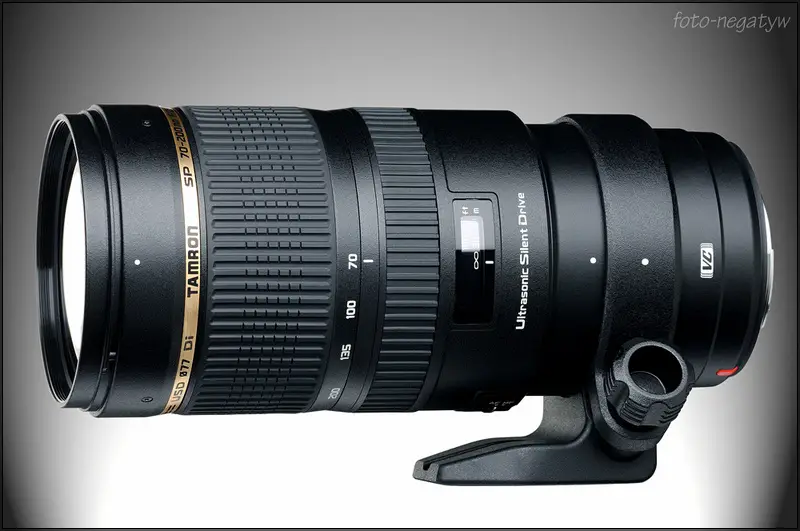







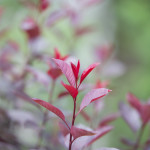





























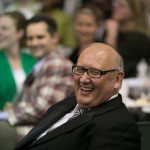
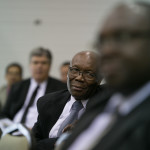














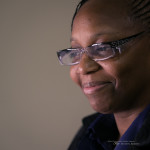









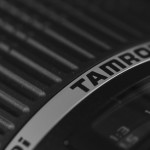
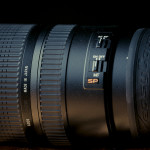

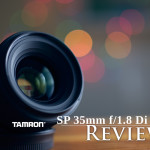






Thanks for your time to write this.
Steve J
Very thorough review. I have being researching this lens for weeks now. I will be buying thanks to you.
I have been researching over this a week for my newly brought 6D body. This review helped a lot to take a decision for taking outdoor portraits. Even now I am thinking about going for a Tamron 24-70 VC also instead of 24-105 IS. Already ordered and waiting for it.
Excellent review.. Definitely would prefer over sigma..